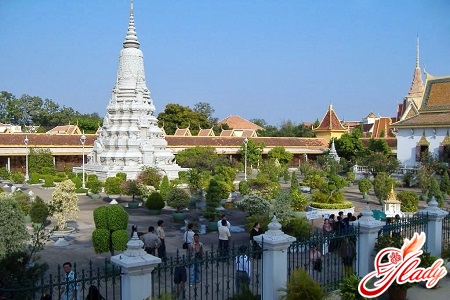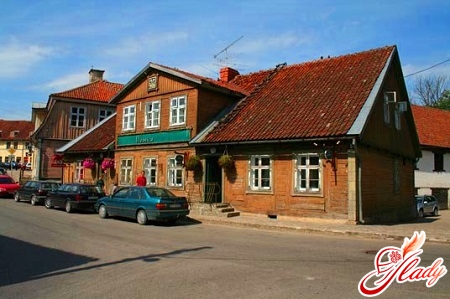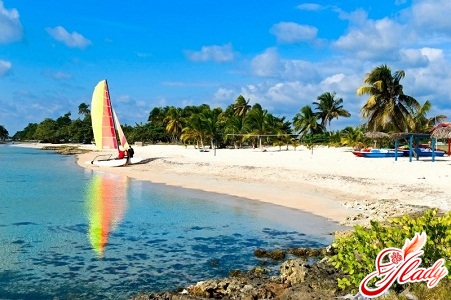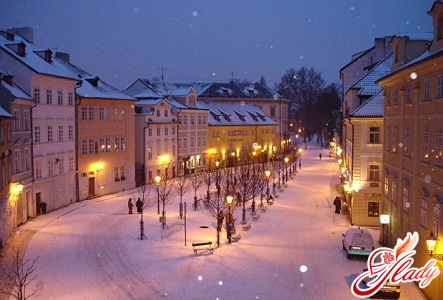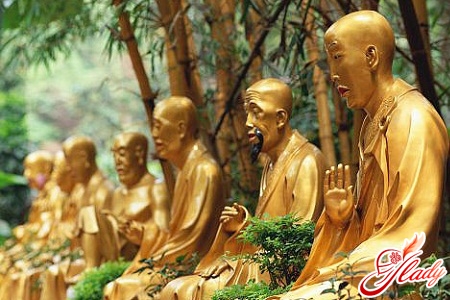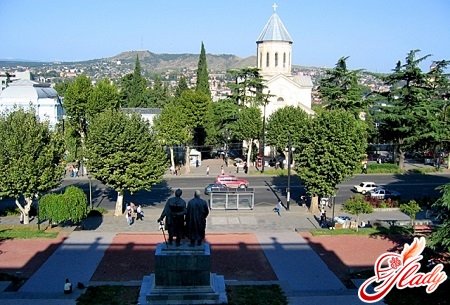
Tbilisi is an amazing city!It harmoniously coexists between the historical center, the so-called Old Town, and a modern area filled with shops and restaurants. Both parts of the city are full of attractions. To see all the sights of Tbilisi, you need at least a week. And if you take into account Georgian hospitality with long gatherings in restaurants, then you should allocate at least 2 weeks to visit this city. It is logical to start getting to know the city of Tbilisi from its historical center. The Old Town is a unique fairy-tale area. Here, old brick streets run up and down, walking along which you continuously admire the ruins of a fortress, temples, palaces. Artists and artisans sell their creations on these same streets. In the center of the Old Town, there is a mosque, a synagogue and the Armenian Apostolic Church.
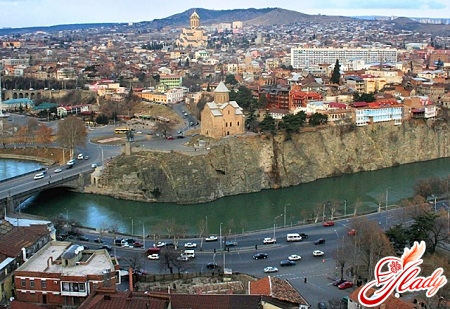
Temples and cathedrals in the Old Town
One of the significant sights of Tbilisi— the ruins of the Metekhe Temple, built in the 12th century. The temple has a complicated history. It was destroyed many times by the Mongols and the Persians. And each time it was rebuilt and restored. Nowadays, little remains of the temple: a square brick building with a round tower rising in the center. Previously, there was a temple, a monastery, and a castle here. And it stood on the burial site of the first Georgian martyr named Shushanika Ranskaya. She was killed by her husband in the 5th century. Another equally important landmark is the functioning Sioni Cathedral, or Sioni. The cathedral was built in the 12th century, and was destroyed and restored several times. Today, this is a modest-looking building without any decorations, but in fact, it is a Cathedral, the residence of the Catholicos. In addition, a very important shrine for the Georgian people is kept here - the the cross of St. Nino, who established Christianity on this land. A unique place is the Church of St. Mary, which is now called the Anchiskhati Church. What is interesting about this church is that it was built in the 6th century and is still in operation today. The church is also interesting for its architecture, which is not typical for buildings of this type - a three-aisled basilica. The most modern, most majestic, most beautiful cathedral in Georgia is the Sameba Cathedral. Built in 2004 with donations from citizens, the cathedral is 78 meters high and can accommodate up to 15,000 people. The temple is visible from anywhere in Tbilisi, especially at night when its illumination is turned on.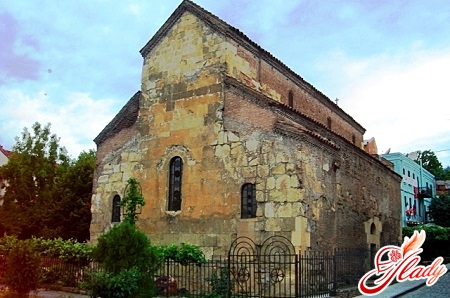
Mount Mtatsminda and the fortress Narikala: historical sights
After seeing the sights of the Old Town,Climb the Holy Mount Mtatsminda, better known as Mount David. The mountain offers a stunning view of the city. On the mountain there is a television tower (274 m high and an unusual shape - a trunk and two "supports"), a funicular station building, a small church of St. David and a cemetery where outstanding figures of the country are buried. But the most interesting thing on Mount David is the Narikala Fortress. Residents of Tbilisi treat these ruins with special reverence and lovingly call them the heart of the city. The fortress was built at the same time as the city of Tbilisi was founded, in the 4th century. Over time, the fortress was completed and improved, but it did not survive the earthquake of 1827. Since then, only ruins and the Church of St. Nicholas remain, which was reconstructed in the 90s and is still in operation today.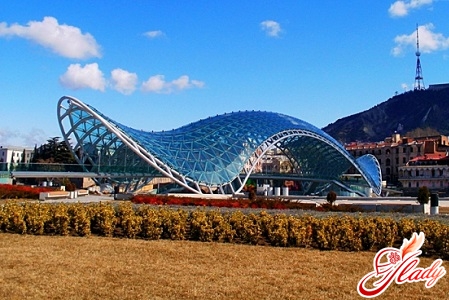
The sulfur baths of Tbilisi
The presence of a large number of hot sulfursprings served as an impetus for the construction of sulfur baths in these places in the 17th-19th centuries. However, in the old days it was not only and not so much a place where people came to wash, but a place where they sat for intimate conversations on long evenings, a place where matchmakers arranged bride shows, where dinner parties were held. Today, there are 7 sulfur baths in the Old City, those that were built many years ago. All of them are built in the oriental style. The most beautiful bath is considered to be the Orbelian bath thanks to its minarets, pointed facade with blue tiles. Inside, the walls of the bath are decorated with mosaics. Modern sulfur baths have pools with hydrogen sulfide, showers, pedestals for massage, made of stone. Sulfur baths are a favorite place not only for tourists, but also for local residents, because they are very beneficial for health. It is believed that a woman’s beauty and youth directly depend on the regularity of visiting sulfur baths.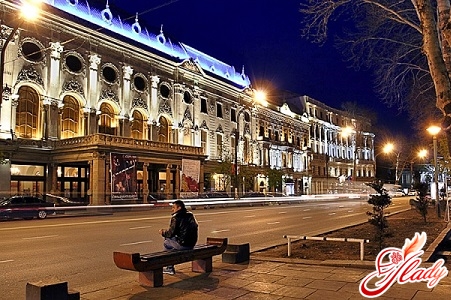
Modern part of the city: museums and theaters Tbilisi
No less attractive attractionsare also located in the younger part of the city. They are mainly located in one way or another near Rustaveli Avenue. Rustaveli Avenue is the central street of the city. Cafes, restaurants, hotels, and cinemas are located here. Life is in full swing on this street, which is about 1.5 km long. On one side of the avenue is Freedom Square - this is the central square of the city. The administration building, the city bank, and the Statue of Liberty are located on Freedom Square. All significant events of the country and the city take place on this square. On the other side, the avenue ends with Rustaveli Square. If you want to get to know Georgia more than superficially, then you should definitely visit the National Museum of Georgia. The museum is a repository of valuables of Caucasian culture. And this culture, as we know, is very rich. The National Museum exhibits vessels made of precious metals, decorated with precious stones, coins, jewelry, carpets, clothes, and handicrafts. Many exhibits date back to the 5th-7th centuries. The museum building itself, designed in the old Georgian style, deserves special attention. The Georgian Art Museum is no less interesting. And the exhibits in this museum are no less valuable. Just one golden cross of Queen Tamara, decorated with pearls, rubies and emeralds, is worth something! The museum also exhibits the oldest icon of Georgia, gold jewelry, paintings by artists from all over the world, including our masters (Aivazovsky, Repin, Surikov, Serov, Vasnetsov). You can have a pleasant evening at the Opera and Ballet Theater. The theater building with arches, turrets and beautiful stained glass windows is an adornment of Rustaveli Avenue. No less beautiful is the Shota Rustaveli Theater. It is made in a different, modern style. The facade of the building has mirrored windows, and the walls are decorated with whimsical images of harlequins, chimeras, houris. Tbilisi also has the Griboyedov Russian Drama Theater, which recently celebrated its 160th anniversary.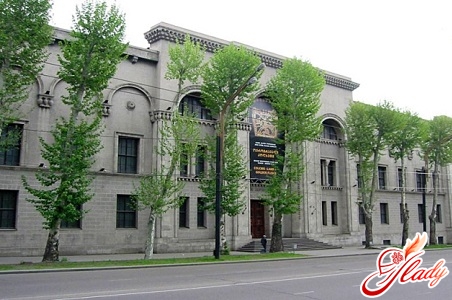
Nature attractions Tbilisi
The most favorite natural place of the residentsTbilisi is Turtle Lake, which got its name from the turtles that once lived here. The lake is located at an altitude of 800 m, just a little over 3 km from the city. The lake is in the forest, around it there is an equipped beach with summer cafes, sun loungers, and playgrounds. The lake is constantly fed by mountain streams, so the water in it is crystal clear. You can go up to the lake by cable car, enjoying the panorama of the city. Another favorite natural place for locals and tourists is the Botanical Garden, located near the Narikala Fortress. The Botanical Garden dates back to 1625, when it was a small park for walks. Over time, the Botanical Garden has transformed and expanded. Today it is a large area (about 130 hectares) with evergreen plants from all over the world (more than 3,500 species, including 700 local plant species), and the collection is constantly growing. There is also a crystal clear river with three large bridges, near one of which a 42-meter waterfall makes a peaceful noise. The Botanical Garden is so well-kept and beautiful, there are so many interesting plants in it, that the whole day flies by unnoticed. Consider this fact when planning your time. Having spent some time in Tbilisi, you will not only immerse yourself in the history of Georgia, but also enjoy the beauty of the city and the hospitality and friendliness of the locals.




